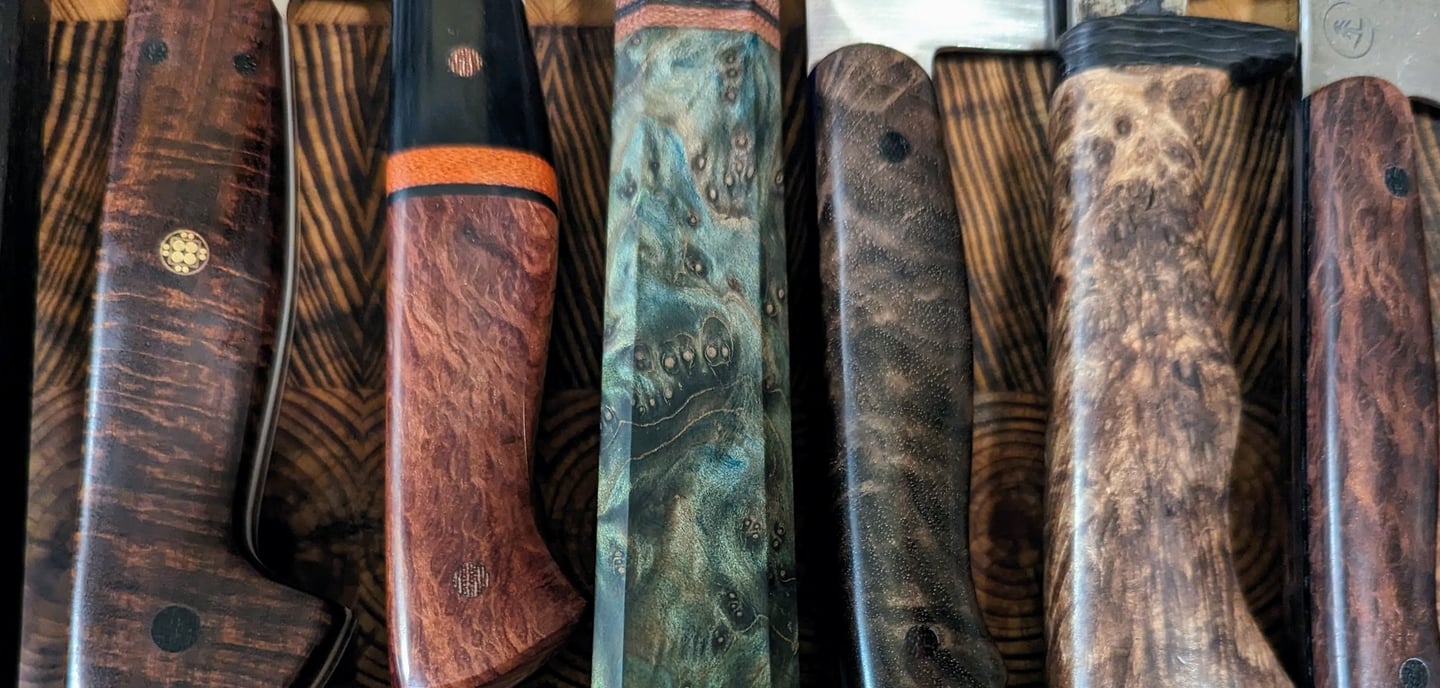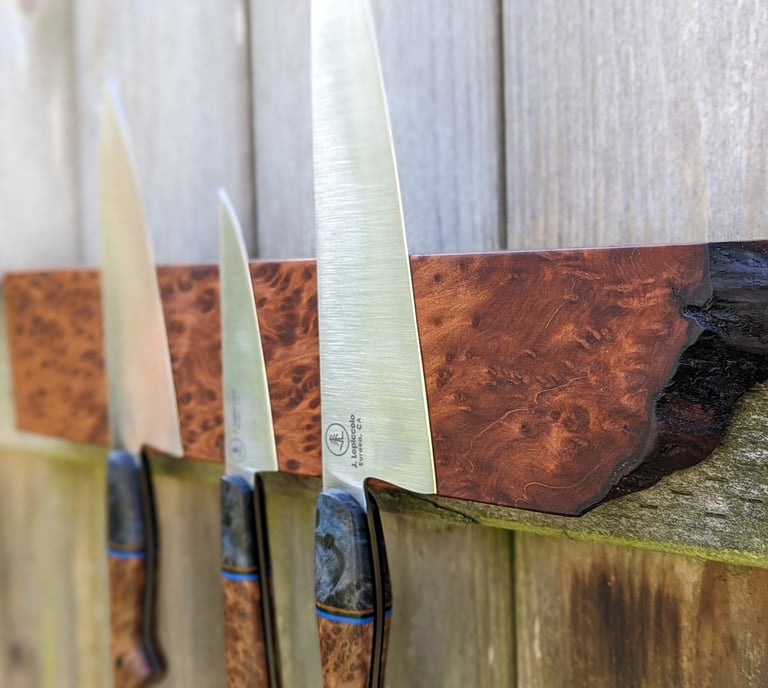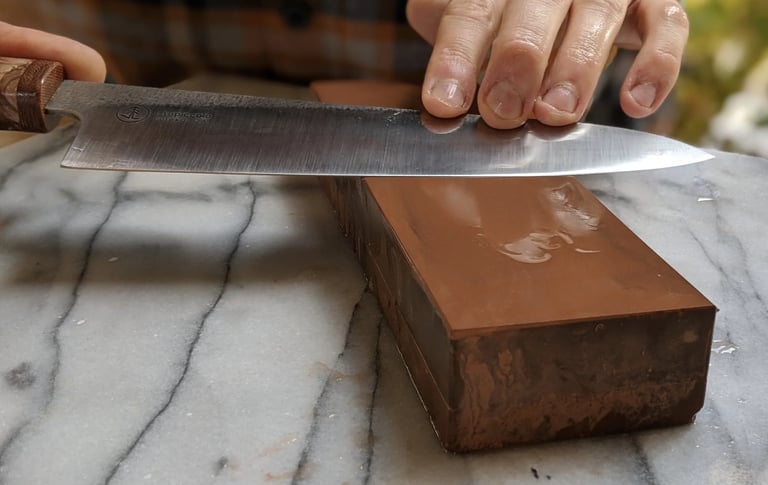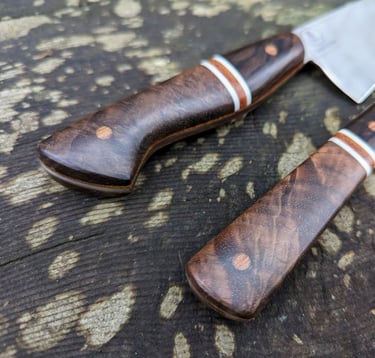



General Knife Care
NEVER wash your knife in the dishwasher
Don’t leave your knife soaking in water
Avoid glass or granite cutting boards as they will chip and dull your knife
Only use the soft side of the sponge when washing, especially on Damascus blades
Hand wash and immediately towel dry carbon steel and Damascus blades after use to prevent rust
Carbon steel blades will develop a patina over time and with use. This is normal and is a form of controlled oxidization of the steel that will aid in preventing uncontrolled oxidization -i.e. rust
Store your blade somewhere the edge won’t get bumped around by other metal objects like silverware or on a knife rack with exposed magnets


Sharpening
I recommend using a leather paddle strop with a fine abrasive such as chromium oxide or a very fine whetstone to maintain your edge between sharpening.
Avoid using “pull-through” or electric sharpeners as they’re not meant for fine and thin edges and can chip or damage the edge
Sharpening on whetstones or diamond plates works best but using high grit sandpaper stuck on a flat surface (granite or glass) works as well
Handle Care
The majority of wood that I use is stabilized and doesn’t need any maintenance. While it may lose a bit of its luster over time, this can be brought back with a light buffing with a wood wax.
For handles made of unstabilized wood, semi-regular oiling will help prevent drying of the wood after frequent washing. I recommend using a food-safe polymerizing oil such as Tried and True, walnut oil, or tung oil. Wipe the oil on in a thin layer, let it absorb into the wood for 10-15 minutes, then wipe dry and leave the handle alone until it dries (usually overnight). Some of the handle materials that are not stabilized since they are too dense and oily to take the stabilizant are: desert ironwood, cocobolo, African blackwood, and verawood.


